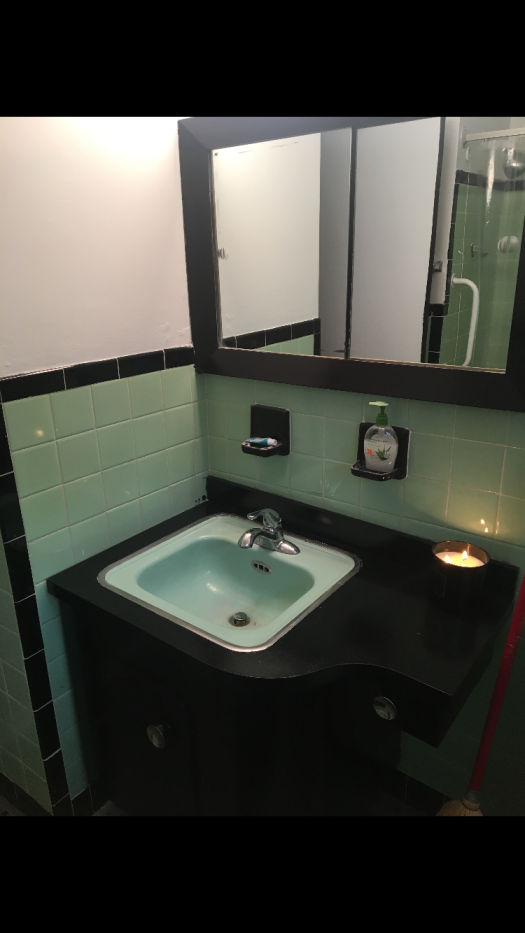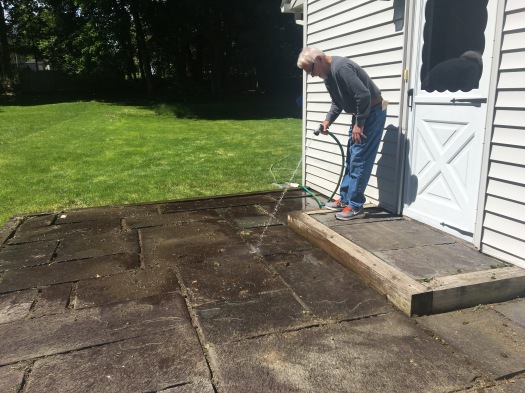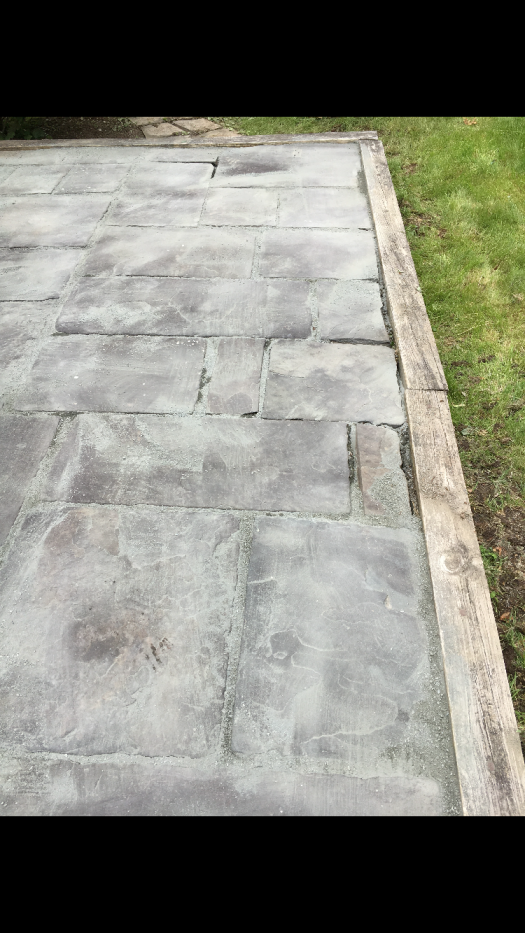The project that has been the most intimidating, daunting, and also exciting, is our hardwood floors. All three bedrooms have original hardwoods, and hiding underneath all the carpeting is more hardwood. We really don’t like carpeting, plus it affects Ted’s allergies, and when we were house searching, hardwood and laminate were top of our list, since it would be a big first expense to completely replace the floors day one.
Our master bedroom has been the first project; once it’s completely done we can officially move in and work on the rest of the house as we go. We’ve also been debating whether we want to refinish ourselves or hire it out. We decided that we would try to do the master ourselves and depending on results, whether we would do the rest ourselves or hire it out. Check out the steps we took, the pictures of our process, and our final results!
Supplies:
- Palm sander (we own a Milwaukee $50 one, so cheap and so helpful!)
- Sandpaper – 80, 100, 120, 220 grits
- Sanding block
- Pole sander
- Mineral spirits
- Fast drying satin polyurethane (MiniWax)
- Tack cloth
- Soft, lint free rags
- Lint-free cheesecloth textured rags
- Push-broom
Total time: 2-3 hours each day, over the course of 5 days, not including dry time between poly. Total project was one week.

1. The picture above, you can see there are lots of scratchs, wornout finish, and altogether, a lackluster finish. We liked the colors though since the boards had all types of different tones and colors coming through from the original stain. With that, we determined our plan of action: clean, remove the old polyurethane finish, sand out minor scratches, clean, and re-polyurethane.
2. I used hot water with TSP-phosphate free to start removing and cleaning up the surface grime and wax build-up.

This helped remove some of the dark amber-ing from the wax they had applied to give it some of that shine. I repeated this cleaning twice.
3. Sand, sand, sand! After the floor dried, came the really exhausting part. We had decided against a drum sander; neither of us felt comfortable using one with the possibility of really messing your floors up. Since we had decided that we wouldn’t be removing the original stain, it wasn’t necessary to use that machine. Instead, I grabbed a pole sander, a palm sander, and the different grits we would need (80,100,120,220). The pole sander didn’t work for the first sanding with 80 grit. The floors have settled and there is highs and lows in the floor making it hard to get an even sand with the pole sander. Using a sanding block wrapped in the correct sand paper, on my hands and knees I sander every inch of the floor, through the scratches and old finish.

4. Sand…..again! I repeated the process now with 100 grit and then with 120 grit, with the help of a palm sander as well. This softened the sanding scratches from the 80, and gave us a very smooth (and dusty) finish. The stain didn’t come up much at all, so no boards needed any stain. I could tell we were sanding deep enough since the first sanding had this dark amber dust (the old finish) and as we sanded more, became lighter in color, like sawdust.
5. Clean all dust on everything and everywhere. This took forever! First, I swept up all the dust I could, using a regular broom and a push broom. After a few sweeps of the broom, I went back through making sure to sweep the dust boards, wipe down the windows, and walls. This was the most important step, because no matter how well you apply the poly and how well you sanded, dust is the enemy and can ruin the final appearance and adhesion of the floor. I also took the time to change my clothes, which were full of dust. After I finished sweeping, I used a soft cotton rag all over the floor. Then, once the rag was coming up clean of dust, I took a package of lint free cloths with a similar texture of cheesecloth, dampened with mineral spirits. On my hands and knees (and rags under my knees and feet), I rubbed every last bit of dust out of the boards, in the direction of the grain.
6. At this point, I let the mineral spirits disapate for 30 minutes to make sure everything was evaporated. I ran a clean cloth over the floor to check for dust and there was none. I prepared for polying. We used MinWax Super Fast-drying polyurethane for floors, in a satin finish. It’s a more forgiving finish, since we wouldn’t know until the first coat how well we had sanded and cleaned.
7. Using an approximately 4 inch lambskin block, and natural white china bristle brush, I started in the furthest corner. I went 8-10 board width at a time, and cut in the edges. Then using the applicator, I applied the poly to those 8-10 boards and worked the entire length of those boards. Once the length of the room I came back to the starting point, and did another 8-10 boards in the same fashion, making sure to brush into finished boards to prevent lap marks. It is so important that you are keeping a constant wet edge to prevent lap marks and lines. I worked the entire floor this way and worked myself out of the room.


8. Let it dry! Even though this is a fast drying poly, it still takes at least 4 hours to dry! We let it dry for approximately 36 hours before going back in. Ted went in to shut windows at this time and the finish looked awesome. There were a couple spots near the edges where the finish was duller and not as vibrant because they were the highs of the floor and the poly was thinner there.
9. In between the coats of poly, I used 220 and tack cloth to get every piece of dust up. Once it was clean again, I followed to same method of polying, but with a 10″ lambskin applicator instead. We then left it alone again.
10. Enjoy! The floor looked AWESOME when it was done. We have a couple more things to pull together to complete this room, but once touch-ups and our furniture and decor are put in, I’ll show you the final product!

 One coat of primer seemed efficient, and also made such a difference already in this room. We decided to do a high gloss black in an acrylic enamel for the top coat.
One coat of primer seemed efficient, and also made such a difference already in this room. We decided to do a high gloss black in an acrylic enamel for the top coat. 























